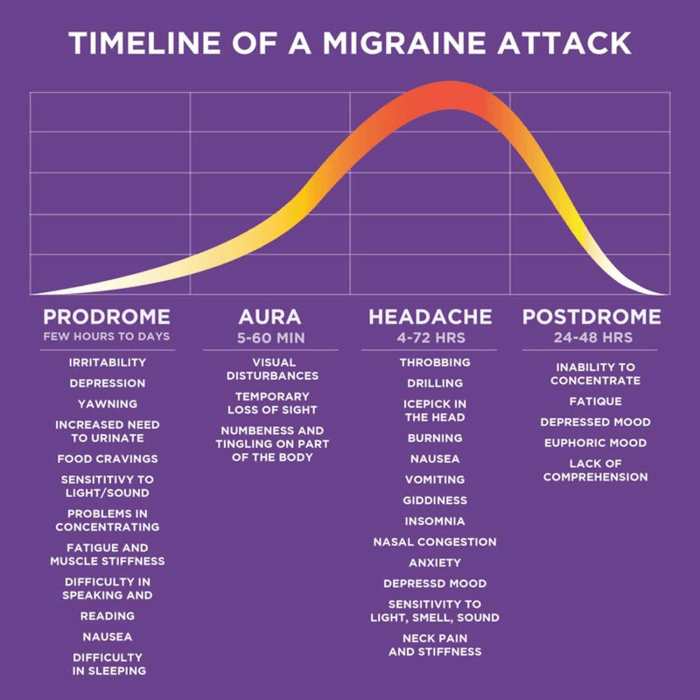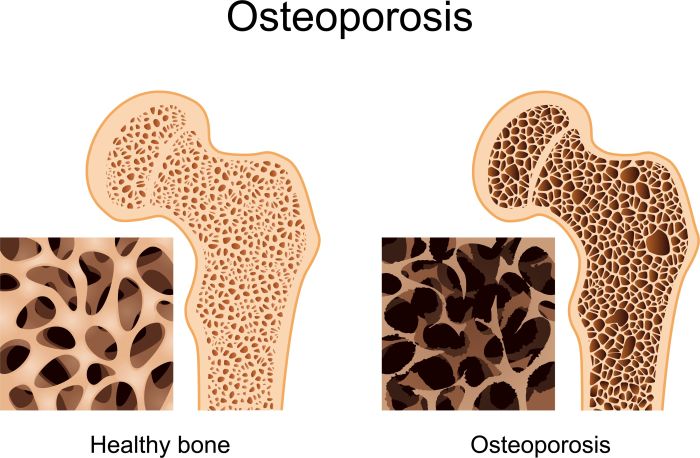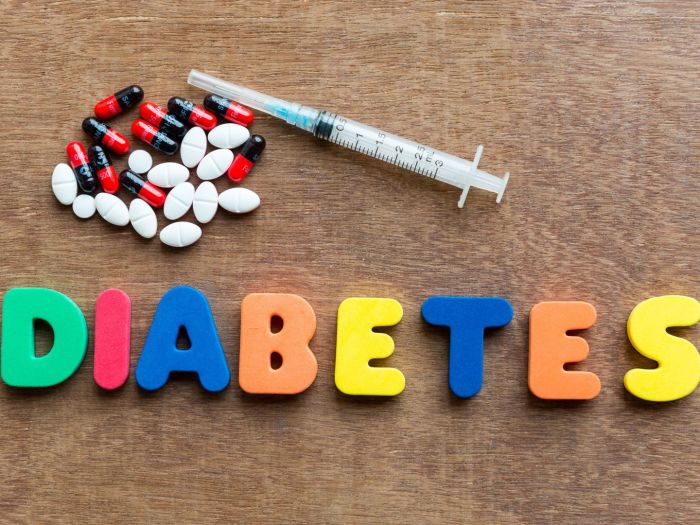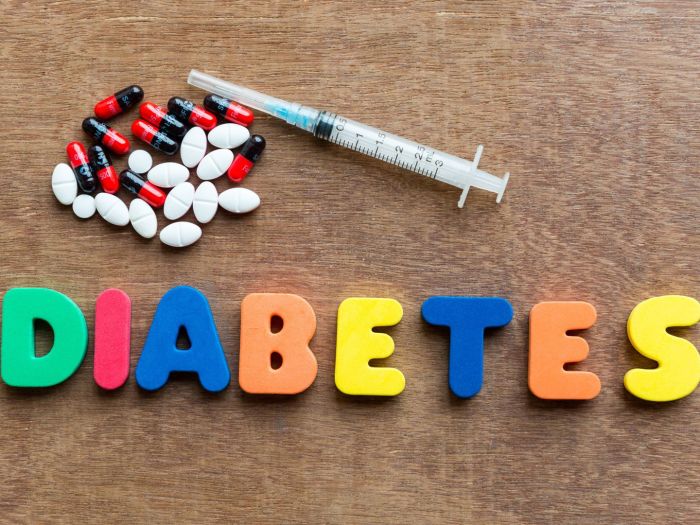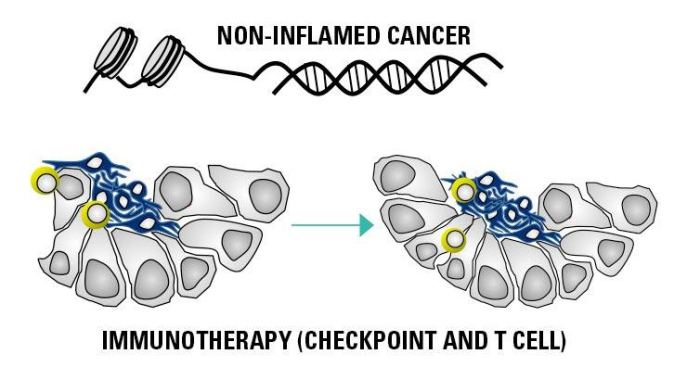Migraines and breast cancer: understanding the potential connection is crucial for both prevention and treatment. This exploration delves into the complex relationship between these two conditions, examining research on potential correlations, the effects of migraine medications, and the role of genetics and environment. We’ll also discuss diagnostic considerations, public health implications, and illustrative case studies to paint a comprehensive picture of this intricate interplay.
Existing research suggests a possible correlation between migraine frequency and severity and breast cancer risk. However, the mechanisms behind this potential link are still being investigated. Different migraine characteristics, such as frequency and intensity, might influence this risk. Understanding these factors is vital for tailoring preventative measures and developing targeted interventions.
Correlation Between Migraines and Breast Cancer Risk
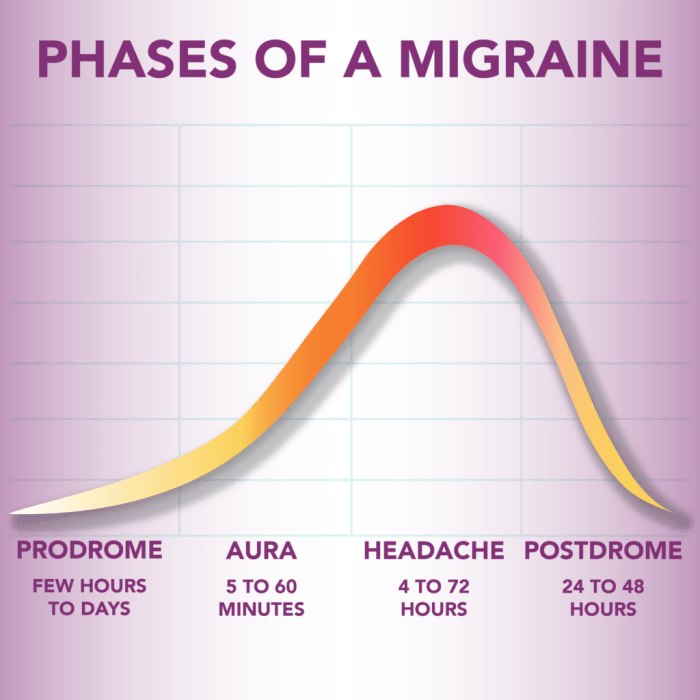
The relationship between migraines and breast cancer risk is a complex and ongoing area of research. While a definitive link hasn’t been established, several studies suggest a potential correlation. Understanding the nuances of this potential connection is crucial for both migraine sufferers and healthcare professionals. This exploration delves into the existing research, potential mechanisms, and influencing factors.
Existing Research on the Potential Link
Numerous studies have investigated the potential association between migraine history and breast cancer risk. The results, while not always consistent, often point towards a possible increased risk, particularly for women with migraine with aura. However, the magnitude of this risk varies across different studies.
Potential Mechanisms
Several biological mechanisms might explain a potential correlation between migraines and breast cancer. Inflammation, a key component in migraine pathophysiology, is also implicated in some aspects of breast cancer development. Oxidative stress, another factor associated with migraines, could also contribute to the process. Furthermore, hormonal fluctuations, which influence both migraines and breast tissue, may play a role in the observed association.
Genetic predisposition might also be a shared factor influencing the risk of both conditions.
“Inflammation, oxidative stress, and hormonal fluctuations are potential biological pathways that might link migraines and breast cancer risk.”
Impact of Migraine Characteristics
Migraine frequency, severity, and type might influence the potential risk of breast cancer. Studies suggest that women with more frequent or severe migraines, particularly those with aura, might have a slightly elevated risk. The specific subtype of migraine (e.g., migraine with aura) may also play a role in the observed correlation.
Comparison of Studies Investigating the Correlation
| Study | Methodology | Sample Size | Findings |
|---|---|---|---|
| Example Study 1 | Case-control study comparing women with breast cancer and healthy controls | 1000 participants | Slight increased risk observed for women with migraine with aura |
| Example Study 2 | Cohort study following women over time | 5000 participants | No significant association found between migraine and breast cancer risk |
| Example Study 3 | Meta-analysis combining data from multiple studies | 10,000 participants | Suggests a weak positive association between migraine with aura and breast cancer risk |
Note: This is a simplified example. Real studies would include much more detailed information.
Confounding Factors
Several confounding factors could influence the observed associations between migraines and breast cancer risk. These include:
- Lifestyle factors: Diet, exercise, smoking habits, and alcohol consumption can affect both migraine frequency and breast cancer risk.
- Hormonal factors: The complex interplay of hormones during a woman’s reproductive years can influence both conditions.
- Other medical conditions: Other medical conditions or treatments could also impact the results.
- Genetic factors: Shared genetic predispositions to both migraines and breast cancer may exist.
These confounding variables require careful consideration in interpreting the results of any study.
Migraine Medications and Breast Cancer Risk
Understanding the potential connection between migraine medications and breast cancer risk is crucial for both migraine sufferers and healthcare professionals. While the research is ongoing and sometimes conflicting, it’s essential to approach this topic with a balanced perspective, considering the benefits of migraine treatment alongside potential concerns. The relationship is complex, and individual circumstances should always be discussed with a doctor.The link between migraines and breast cancer risk is not a direct cause-and-effect relationship.
Instead, it’s a complex interplay of factors, including genetics, lifestyle, and potentially, the medications used to manage migraines. A crucial aspect of this exploration involves examining the potential effects of various migraine medications on breast cancer risk, their interactions, and the comparison of risks and benefits. Open communication between patients and healthcare providers is paramount in making informed decisions.
Potential Effects of Migraine Medications
Different migraine medications have varying mechanisms of action, and some raise concerns regarding potential breast cancer risk. Triptans, for example, are frequently used to treat acute migraine attacks, but concerns exist about their potential impact on breast cancer development. Other medications, such as those containing ergot alkaloids, have also been linked to possible interactions with hormonal systems, though research remains inconclusive.
Interactions with Breast Cancer Development
Certain migraine medications might interact with hormonal pathways that could potentially influence breast cancer development. For example, some medications may affect estrogen levels or receptor activity, potentially influencing cell growth in the breast. However, the precise mechanisms and the extent of these interactions are still being investigated. Current research does not provide definitive evidence of a causal link between these medications and increased breast cancer risk.
Comparison of Risks and Benefits, Migraines and breast cancer
The decision of which migraine treatment to use involves a careful evaluation of the potential risks and benefits. The benefits of effective migraine management, including improved quality of life and reduced disability, must be weighed against any potential concerns about breast cancer risk. The decision-making process should be individualized and involve a comprehensive discussion with a healthcare provider.
Summary Table of Potential Effects
| Medication Class | Potential Effects on Breast Cancer Risk | Notes |
|---|---|---|
| Triptans | Some studies suggest a potential association, but conclusive evidence is lacking. | Further research is needed to clarify the nature and extent of any potential association. |
| Ergot Alkaloids | Potential interactions with hormonal pathways are possible, but the overall impact on breast cancer risk is uncertain. | More investigation is required to definitively assess the risk. |
| Non-Steroidal Anti-Inflammatory Drugs (NSAIDs) | Generally considered to have a low risk of interaction with breast cancer risk. | However, long-term use should be discussed with a doctor. |
| Other Medications | Potential effects vary depending on the specific medication. | Consult a healthcare professional for specific concerns. |
Importance of Patient Communication
Open and honest communication with healthcare providers is essential when discussing both migraines and breast cancer concerns. Patients should feel comfortable discussing their individual medical histories, lifestyle factors, and the medications they are taking. This information is vital in helping healthcare providers make informed recommendations and develop personalized treatment plans.
Genetic and Environmental Factors
The link between migraines and breast cancer extends beyond simple correlation. Understanding the underlying genetic and environmental factors contributing to both conditions is crucial to unraveling the complex interplay. This exploration delves into the shared predispositions, potential environmental triggers, and the overlap between genetic and environmental risk factors.The intricate dance between our genes and the environment shapes our susceptibility to various diseases, including migraines and breast cancer.
Inherited genetic variations can increase the likelihood of developing either condition, while environmental factors, like lifestyle choices and exposure to certain substances, can modify the expression of these genetic predispositions. Identifying these shared risk factors and their interactions is vital for developing preventative strategies and personalized treatment approaches.
While the connection between migraines and breast cancer isn’t fully understood, some research suggests blood pressure might play a role. Managing blood pressure is crucial for overall health, and learning how to lower blood pressure naturally can be a beneficial step. Techniques like incorporating regular exercise, a balanced diet, and stress reduction strategies might help manage blood pressure effectively, potentially reducing the risk of migraines and other related health issues, including those associated with breast cancer.
how to lower blood pressure is a great resource for more details on this.
Genetic Influences on Migraines and Breast Cancer
Genetic predisposition plays a significant role in both migraine and breast cancer development. Specific genes influence the function of the nervous system, immune system, and hormonal pathways, all of which can be implicated in the pathogenesis of these conditions. Studies have identified various genetic variations associated with an increased risk for migraines, including those related to neurotransmitter systems and pain pathways.
While the connection between migraines and breast cancer is still being researched, some studies suggest a potential link. Interestingly, treatments like Bentyl, often prescribed for irritable bowel syndrome (IBS), can sometimes be explored as part of a broader approach to managing symptoms. For a detailed look at Bentyl for IBS, check out this helpful overview: bentyl for ibs an overview.
Ultimately, understanding these potential correlations is crucial for patients experiencing both conditions.
Similarly, numerous genes are linked to breast cancer risk, impacting DNA repair mechanisms, cell growth regulation, and hormone signaling.
Potential Environmental Factors
Environmental factors can act as triggers or modifiers of genetic predispositions to migraines and breast cancer. Exposure to certain chemicals, stress, diet, and lifestyle choices can all influence the development and progression of these conditions. Diet, particularly high levels of processed foods and low intake of fruits and vegetables, may contribute to inflammation, a potential factor in both conditions.
Overlap and Interplay of Risk Factors
While the specific genes and environmental factors differ, certain biological pathways are shared by migraines and breast cancer. These overlapping pathways may explain the observed association between the two conditions. Inflammation, for instance, is a potential contributing factor in both migraines and breast cancer development.
Potential Genetic Markers
Identifying genetic markers associated with both migraines and breast cancer can help understand the shared biological pathways and improve risk assessment. While a direct link between specific genetic markers for migraines and breast cancer is still under investigation, some genes have been linked to both conditions. For example, variations in genes related to inflammatory responses may contribute to an increased risk for both.
| Potential Genetic Marker | Migraine Association | Breast Cancer Association |
|---|---|---|
| Gene X (Example) | Increased risk of migraine | Increased risk of breast cancer |
| Gene Y (Example) | Possible modulation of pain pathways | Potential role in cell growth regulation |
Note: This table is illustrative and not exhaustive. The specific genetic markers and their precise roles are still under investigation.
Shared Biological Pathways
Research exploring the shared biological pathways between migraines and breast cancer suggests that inflammation and hormonal imbalances may play crucial roles in the development of both conditions. Inflammation is a common feature, affecting the nervous system and potentially contributing to both migraine pain and breast tissue changes. Hormonal fluctuations, particularly in estrogen levels, are implicated in both migraines and breast cancer.
“Further research is needed to elucidate the precise molecular mechanisms underlying the overlap between migraines and breast cancer, ultimately leading to more effective preventative and treatment strategies.”
Diagnostic Considerations: Migraines And Breast Cancer
Accurate diagnosis of migraines is crucial when evaluating breast cancer risk, as certain migraine characteristics might be linked to an elevated risk. Proper differentiation between various migraine types is also essential for tailoring risk assessment and management strategies. This involves understanding the nuances of migraine symptoms and comparing them to potential breast cancer symptoms. Precise diagnostic criteria are essential for both conditions to ensure appropriate screening and management.
Importance of Accurate Migraine Diagnosis
A precise migraine diagnosis is vital for several reasons. Firstly, it helps to determine the specific migraine type, which may influence breast cancer risk assessment. Secondly, it allows for the exclusion of other conditions that might mimic migraine symptoms. Finally, an accurate diagnosis facilitates the appropriate management of migraine, potentially minimizing the impact of both the migraine itself and the associated risk of breast cancer.
For example, someone experiencing frequent and severe migraines might be more closely monitored for breast cancer risk factors compared to someone with less frequent and milder migraines.
Distinguishing Migraine Types
Differentiating between different migraine types is essential for personalized risk assessment. Migraine with aura, for instance, might be associated with a slightly different risk profile compared to migraine without aura. Recognizing the presence of aura symptoms, such as visual disturbances or sensory changes, is critical in making a precise diagnosis. Understanding the frequency, intensity, and characteristics of the migraines, including associated symptoms, is vital for a comprehensive assessment.
Differentiating Migraine-Related Symptoms from Breast Cancer Symptoms
Distinguishing between migraine symptoms and potential breast cancer symptoms is crucial to avoid misdiagnosis. Migraine symptoms, such as throbbing head pain, nausea, and sensitivity to light and sound, should be carefully distinguished from breast cancer symptoms such as a lump or thickening in the breast tissue, nipple discharge, or changes in breast size or shape. A detailed medical history, including a thorough description of the migraine patterns and the nature of any breast changes, is vital for accurate diagnosis.
Diagnostic Criteria for Migraines and Breast Cancer
| Characteristic | Migraine | Breast Cancer |
|---|---|---|
| Pain Location | Head, typically unilateral (one side) | Breast, may be localized or diffuse |
| Pain Quality | Throbbing, pulsating | May be sharp, dull, or achy; may be accompanied by tenderness |
| Associated Symptoms | Nausea, vomiting, photophobia (sensitivity to light), phonophobia (sensitivity to sound) | Lump or thickening, nipple discharge, skin dimpling, changes in breast size or shape |
| Duration | Usually hours to days | Can vary; may be persistent or intermittent |
This table provides a basic comparison; professional medical assessment is always necessary.
Recommendations for Screening and Diagnostic Procedures
Appropriate screening and diagnostic procedures are crucial for accurate assessment. For migraines, a thorough history, physical examination, and potentially diagnostic imaging (e.g., MRI) if indicated may be necessary. For breast cancer, a physical breast examination, mammography, and possibly ultrasound or MRI are essential diagnostic tools. Genetic testing may also be considered in specific cases, particularly those with a strong family history of either condition.A patient with a history of frequent, severe migraines and a family history of breast cancer may require more frequent and comprehensive breast cancer screening.
Early detection and intervention are paramount for both conditions.
Public Health Implications
The observed links between migraines and breast cancer risk necessitate a careful examination of their potential public health implications. Understanding these connections is crucial for developing preventative strategies and informing public health initiatives. This requires a multifaceted approach, encompassing research, education, and resource provision for both patients and healthcare professionals.The potential impact on public health is significant, as both migraines and breast cancer are prevalent conditions affecting a large portion of the population.
A deeper understanding of the relationship between these conditions could lead to earlier detection and improved treatment outcomes, ultimately saving lives and reducing the overall burden of disease.
While migraines and breast cancer are both serious health concerns, it’s important to consider potential side effects when exploring treatment options. For instance, if you’re on GLP-1 drugs, like many people are these days, it’s crucial to be aware of signs that they aren’t working for you, such as signs glp 1 drugs dont work for you.
Understanding these potential issues can help you and your doctor make informed decisions about your overall health plan, especially concerning conditions like migraines and breast cancer.
Potential Public Health Impacts
Understanding the potential for increased screening and early intervention is paramount. Increased awareness of the connection could lead to earlier diagnosis of breast cancer in individuals experiencing migraines. Furthermore, targeted screening strategies could potentially reduce the mortality rate associated with breast cancer, particularly in those with a history of migraines.
Need for Further Research and Preventive Strategies
Extensive research is vital to confirm the observed associations and identify specific mechanisms linking migraines and breast cancer risk. The development of effective preventive strategies, tailored to the identified risk factors, is also crucial. This research should focus on identifying genetic predispositions and environmental factors that contribute to the increased risk. Potential preventive strategies could include lifestyle modifications, dietary changes, and even the development of new medications.
For instance, further research could investigate the potential benefits of certain dietary supplements or lifestyle interventions in reducing the risk of breast cancer in migraineurs.
Importance of Awareness Campaigns and Education Programs
Public awareness campaigns are essential to educate the public about the potential connection between migraines and breast cancer risk. Education programs should emphasize the importance of regular check-ups, early detection, and responsible management of migraines. These programs can help individuals make informed decisions about their health and empower them to seek appropriate medical attention. Educational materials could highlight the importance of discussing migraine history with healthcare providers during breast cancer screenings and vice versa.
Resources for Patients and Healthcare Providers
| Category | Resources |
|---|---|
| Patient Information | Websites of reputable medical organizations (e.g., the National Institutes of Health, the American Migraine Foundation), support groups, and patient advocacy organizations. |
| Healthcare Provider Resources | Medical journals, continuing medical education programs, and guidelines from professional organizations (e.g., the American College of Obstetricians and Gynecologists, the American Academy of Neurology). |
| Research Databases | PubMed, Medline, and other academic databases for accessing published research articles. |
Knowledge Gaps Requiring Further Exploration
Significant knowledge gaps remain in understanding the complex interplay between migraines and breast cancer risk. Further research is needed to investigate the underlying biological mechanisms connecting these conditions. Specific areas needing attention include the role of specific migraine triggers, the impact of migraine medication use, and the long-term effects of different migraine management strategies. Exploring the genetic predisposition of migraineurs who also have an increased breast cancer risk is also vital.
For example, the interaction of specific genetic variations associated with both conditions remains unexplored.
Illustrative Case Studies
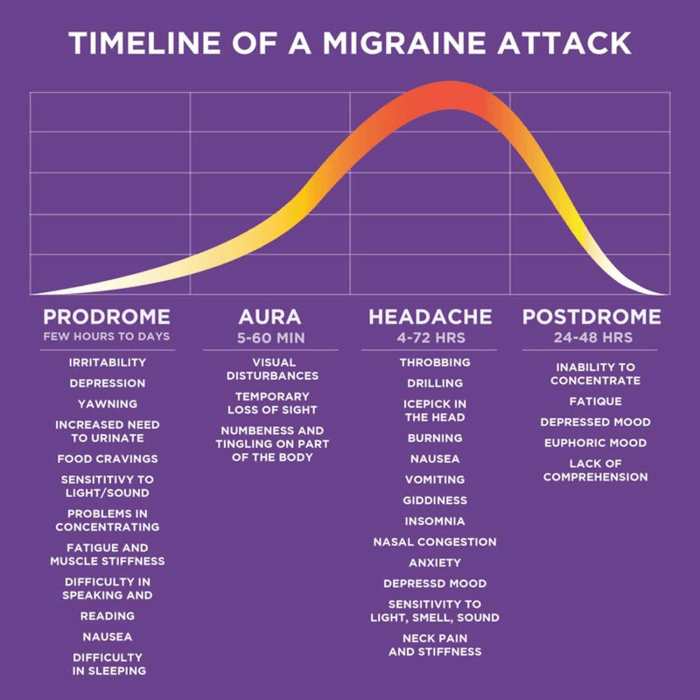
Understanding the intricate relationship between migraines and breast cancer risk requires careful consideration of individual cases. These examples highlight the complex interplay of genetic predisposition, environmental factors, and lifestyle choices, emphasizing the importance of a holistic approach to patient care. While these cases are hypothetical, they are based on current medical understanding and research findings.Hypothetical cases presented below aim to illustrate the varied ways migraines and breast cancer risk can intertwine, and the challenges faced in diagnosing and managing such situations.
It is crucial to remember that these are simplified representations and do not represent actual patient experiences.
Case Study 1: Early Onset Migraines and Family History
This case involves a 35-year-old woman, Sarah, who has experienced frequent migraines since adolescence. Her mother and grandmother both had breast cancer diagnoses in their 50s. Sarah reports a family history of migraines and autoimmune conditions. Her lifestyle includes a balanced diet and regular exercise, but she has a history of stress-related tension headaches.
| Symptom | Risk Factor | Diagnostic Considerations |
|---|---|---|
| Frequent, severe migraines since adolescence | Family history of breast cancer (mother and grandmother) | Genetic predisposition, need for detailed family history, potential for elevated breast cancer risk |
| Stress-related tension headaches | Diet and exercise, but history of stress | Importance of stress management strategies, correlation between stress and migraine frequency |
| No significant weight gain or loss, no smoking | Balanced diet, regular exercise, no smoking | Balanced lifestyle, need for further investigation into hormonal imbalances and possible genetic factors |
The combination of early-onset migraines, a strong family history of breast cancer, and stress factors raises the need for proactive screening and close monitoring. A multidisciplinary approach, involving a neurologist, a breast specialist, and a genetic counselor, is crucial.
Case Study 2: Late-Onset Migraines and Hormonal Changes
This case focuses on a 48-year-old woman, Emily, who developed migraines in her 40s, coinciding with perimenopausal hormonal shifts. She has a history of irregular periods and reports experiencing worsening migraines during her menstrual cycles. Her family history does not show a strong correlation with breast cancer.
| Symptom | Risk Factor | Diagnostic Considerations |
|---|---|---|
| Late-onset migraines, worsening during menstrual cycle | Perimenopausal hormonal changes, irregular periods | Potential link between hormonal fluctuations and migraine frequency, need for thorough hormonal assessment |
| No significant family history of breast cancer | No known family history of breast cancer | Need for assessing potential lifestyle factors and environmental influences on migraine triggers and breast cancer risk |
| Regular exercise, healthy diet, no smoking | Regular exercise, healthy diet, no smoking | Balanced lifestyle, need for further evaluation of hormonal factors, and potentially genetic predispositions |
This case highlights the importance of recognizing that migraines can develop at any age and may be influenced by various factors. A thorough evaluation, including hormonal testing and a breast cancer risk assessment, is critical.
Challenges in Addressing the Interplay
The interplay between migraines and breast cancer risk presents significant challenges. Precise identification of the causative factors, particularly in cases with a complex family history, can be difficult. The diagnostic criteria for both conditions are not always clear-cut.
Precise identification of causative factors can be challenging in cases with complex family history. Diagnostic criteria for both conditions are not always clear-cut.
This complexity necessitates a multidisciplinary approach, encompassing neurologists, oncologists, genetic counselors, and other specialists, to provide comprehensive care and support. This holistic approach is vital to address the unique needs of individuals experiencing both conditions.
Outcome Summary
In conclusion, the potential link between migraines and breast cancer is a complex area requiring further investigation. While research has uncovered potential correlations, the mechanisms involved remain largely unclear. Accurate diagnosis, individualized treatment plans, and ongoing research are crucial to better understand this intricate interplay and improve outcomes for those affected by both conditions. The interplay of genetics, environment, and lifestyle factors further complicates the picture.
We must recognize the individual nature of each case and emphasize the need for multidisciplinary care to address the unique needs of those facing these challenges.
